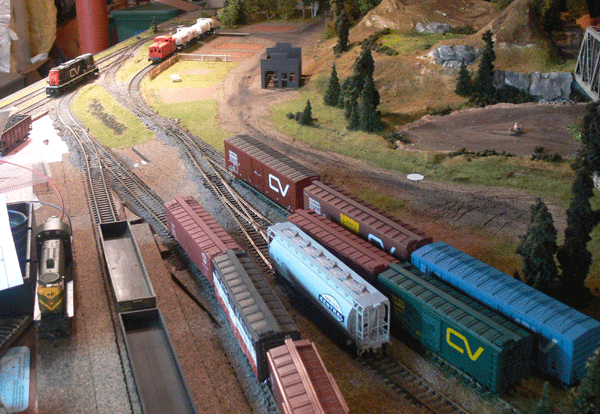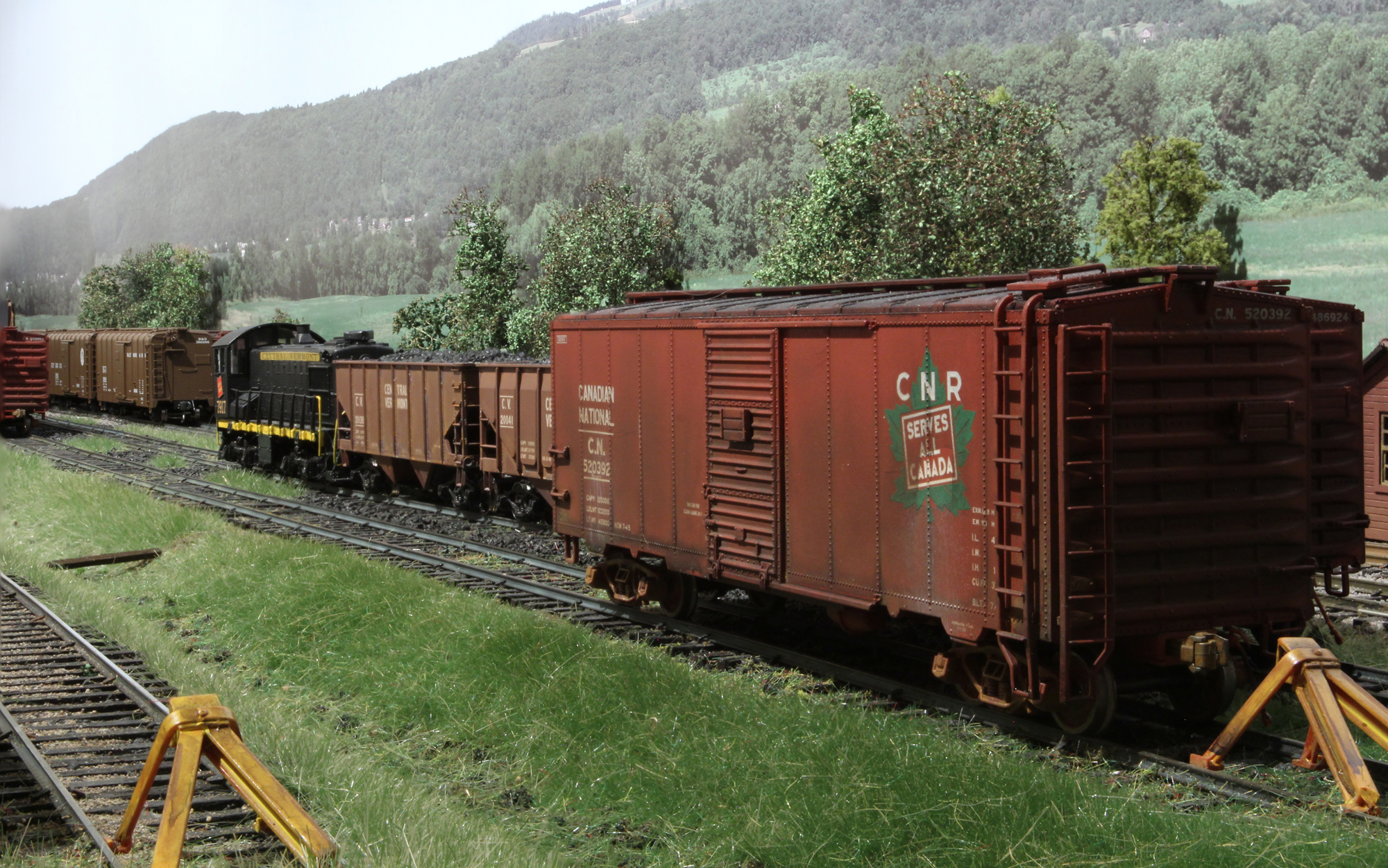There were some discussions on couplers on the MR forums, and after one review. I decided to try the Sergent Engineering couplers. They look great, and are supposed to work well, but are expensive ($7 for three cars in kit form). I decided to try them, and ordered a couple of kits, an assembly jig, an uncoupling wand, and a bag of extra springs and ball bearings (strongly recommended).
After assembling them and loosing a bunch of the springs, I liked the way they worked. I've never been 100% happy with the Kadees, as I often get disconnects over delayed under track magnets, and using hand picks, including the Rix uncoupler, seldom seems to work the first time.
Here's a bad sample on YouTube, note the jerkiness of the loco is because it's never been run (I am trying to convert my Horn Hook equipped items first).
As I write this, I'm new to the hobby, so I don't have a huge fleet of cars to convert, so the conversion cost is minimal. I ordered a second batch of couplers, including one set of pre-built ones (just to see if they made a difference. So far, I don't think they do).
I switched a couple of small trains last evening just for kicks, and there are a couple of things I've noticed now with the Sergents that I have them and have begun to use them.
- The first thing is when the uncoupling works, it works very well. I find that I am fighting less with the the uncoupling process than I was before. Simply reach in, hold the wand on top of the coupler, and reverse the loco, and viola. And right where I want the car. Smooth uncoupling seems directly related to the assembly process, so a little extra care can really pay off down the road. I now rub the inside of the ball socket with a #2 pencil for lubrication, and lightly file the inside part of the knuckle for smoother operation.
- The second thing I love about them is how they don't uncouple. Once they are mated, they stay hooked, no accidental disconnects over delayed magnets, etc.
- The third thing is they way they look. Not only do they look better, but they make trains look better, as the coupler gap is smaller, and this is not a problem even over short turnouts and the one piece of 18" radius sectional track on my test layout, on locos like the RS11s and 50" cars.
- The fourth thing I like is how they install, other than fighting with the spring (but you get better with experience), installation on almost anything is easier than with Kadees, as the height is not as vital.
- The fifth thing I like is the lack of car jerk - this is different than slack, and is more prevalent along the lines of KaDees when cars bounce along forwards and backwards while being pulled or pushed.
- Car resistance. Car weight is important (especially with metal wheel sets) for there to be enough resistance to make solid hands free connection.
The one drawback is coupling; the couplers do have to be aligned to couple successfully. This requires a bit of experience (and I'm getting better, so it's becoming less of a problem). Kadees couple easily most of the time, the Sergents do as well only if they're aligned, but will do so on tight curves. This became more apparent and more work when making new connections, i.e. a different locomotive or car connecting than what was there previously, which requires alignment. On my test layout the yard is in the middle of a 4x8, so reaching in to align things wasn't the easiest, but you do get better as you go. With a more shelf like (narrower) layout that I'm building, this will hopefully be much less of an issue.
Working them in is also necessary for good operation, besides the suggested method in the instructions, I connect and disconnect each car time and time again on a straight piece of track until the action works smoothly.
I was recently asked by a you tube viewer what the strength was. Specifically, could it handle 50 cars, or a 70 car coal drag? I didn't know, so I inquired with Frank Sergent, who was not only kind enough to reply, but kind enough to allow me to post his response below.
Seventy cars that weigh 3 oz would need about [70 cars X 3 oz/car X 0.01) = Seventy cars that weight 3 oz going around a reasonable curve, and up a 3% Ten average diesels all pulling together will against a nail driven in the Twenty really good diesels all pulling against the nail can generate [(20 X Forty really good diesels all pulling against the nail will generate 180 oz I don't think 70 cars would be a problem at all. Back when Railmodel Journal was still alive, they printed a Performance Thanks, |
So there you go. That should answer most questions on the drawbar strength.
Other observations:
- The more you use them, they better they connect and disconnect, which reinforces the manufacture's instructions on breaking them in.
- I've also found that now, often I don't have to align couplers for them to connect, as they seem to be in the same alignment, even from different car to different car.
- There can be problems with couplers that are too tight in the coupler box pulling cars off of the track. This may be negated by better track work and properly weighted cars, but be sure that the coupler moves freely within the box.
- There can be issues with some rolling stock that don't have a smooth coupler box, such as Trueline Trains. A simple solution is available though.
I've made good progress converting my units over to the Sergents, everything pictured below has them!

They really do look grand. Take a look at that CN boxcar!
